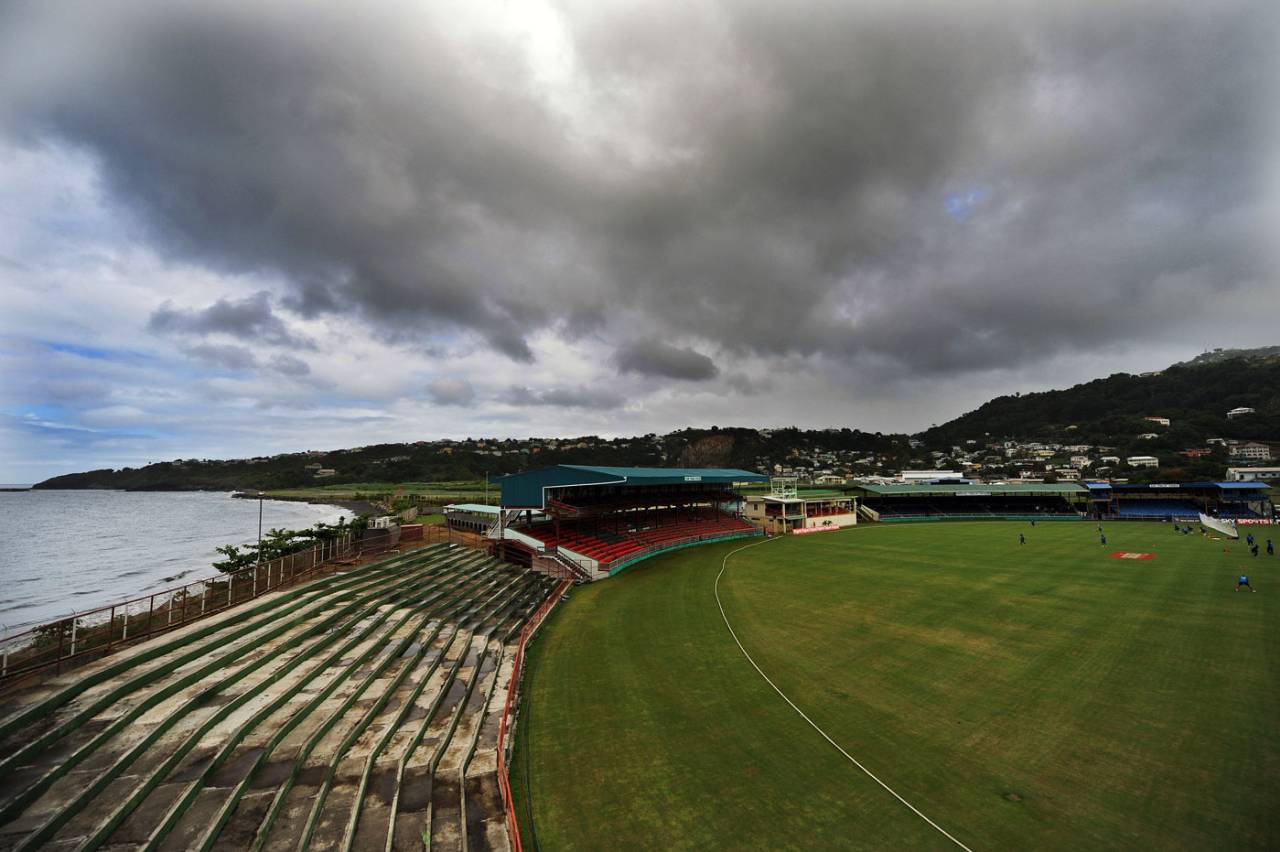There are many bad things about the new football stadium in Sao Paulo where the opening game of the World Cup was staged on Thursday (starting with its existence, given it was created for political reasons, when there were at least two existing stadiums in the city that with a lick of paint and minimal upgrading could have done the job perfectly well), but there is one thing that it gets emphatically right, and that is the fact that there are gaps in the corners.
There is a one-tier bowl, plus permanent second tiers down the long sides of the ground, with temporary stands at the two ends. In the corners are the big screens and television boxes, but they are low, so you can see through, and what that means is that you get a sense of where you are. After hours cooped up in the air-conditioned tent of the media, there's something refreshing about being able to see downtown Sao Paulo, shady hills in the background, a reminder that there is a world beyond the World Cup. When Brazil scored, you could see fireworks bursting in the evening sky.
This, of course, is an area in which cricket has a huge advantage over football. Because the stands tend to be lower, there is a constant sense of life going on outside, from Lumley Castle at Chester-le-Street to Table Mountain at Newlands, to Henry Blofeld's beloved buses passing Archbishop Tennyson's School outside The Oval.
That gives cricket stadiums an identity, a sense of place, that is vital but is all too often missing from football, with its
identikit modern bowls that reach to the skies. And that's just thinking of the aesthetic, without considering what impact buildings or trees may have on atmospheric conditions: variety is good.
Old football grounds still occasionally have that sense of place. At Ninian Park, until two years ago the home of Cardiff City, for instance, you used to be able to see trains passing one corner of the ground. Roker Park, once the home of Sunderland, was one of many grounds that gave a glimpse of the terraced housing that surrounded them. At Tannadice, home of Dundee United, and Upton Park, home of West Ham United, there are flats that have a view into the stadium. They were or are grounds rooted in their communities. At the Estadio da Luz in Lisbon, home of this year's Champions League final, the castle is visible in the distance.
One of my favourite experiences in football was covering an Asian Cup game between Japan and Saudi Arabia in Saida, Lebanon, in 2000, at a time when it seemed the balance of power in Asian football was shifting from west (represented by the Saudis, winners of three of the previous four tournaments) to east (represented by Japan, who had won on home soil in 1992). To the right of the high main stand, the Mediterranean crashed against the rocks and a Crusader fort. Straight ahead, between the mountains that formed the western edge of the Bekaa Valley, a fairground was silhouetted against a purple sky in which lightning flickered. The scene was set for something dramatic, and what followed was the Gotterdammerung of Saudi football as they lost 4-1.
The backdrop added to the occasion. Too often, though, modern football stadiums reach up to the sky. In the homogenised world of the World Cup, it can be impossible to know where you are. I remember in 2006, in Germany, the sense of panic as I tried to add my byline and couldn't recall if I was in Cologne or Frankfurt. Thankfully FIFA, as though recognising the potential problems, add the names of the host cities on a hoarding by the halfway line.
But most of the time one football stadium is very much like another, particularly during major tournaments. The modern football ground is two or three tiers of plastic seats, with very little to distinguish them in terms of the angle of the seats or the distribution of the stands. They are comfortable and have good sight lines, but they are often generic, interchangeable.
Cricket grounds still have their idiosyncrasies, even if modern redevelopment - Adelaide perhaps most obviously - risks removing them. Of course it's understandable that executives want to pack in as many people as possible and maximise the returns on corporate hospitality, but at the same time cricket cannot lose what make its grounds unique - from the mountains of Dharamsala to the volcano at Pukekura to the trees at Kandy to the beach at St Vincent to the cathedral at Worcester. After all, without its quirks, cricket is nothing.
Jonathan Wilson writes for the Guardian, the National, Sports Illustrated, World Soccer and Fox. He tweets here
